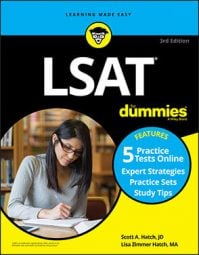Logical reasoning questions on the LSAT that ask you how to best support or damage an argument are some of the easiest to answer. You probably analyze ideas every day and think of evidence to attack or defend those ideas. Because you already have the skill to evaluate arguments, it doesn’t take much work for you to modify that skill to fit this specific LSAT question format.
This question category has two subtypes: One asks you to strengthen an argument, and the other asks you to weaken it. You’ll recognize these questions because they include words that mean to strengthen or weaken (like support, bolster, or impair), and they almost always contain an “if true” qualifier.
Nearly all these questions contain the words “if true,” but not all questions that have “if true” in them are strengthening-or-weakening-the-argument types. To make sure an “if true” question is really a strengthening-or-weakening question, look for the identifying language that asks you to either strengthen or weaken the argument.
Here are three simple steps to follow when approaching strengthening-or-weakening-the-argument questions:
Read the question very carefully so you know exactly what it is you’re strengthening or weakening.
In most cases, it’s the main argument’s reasoning. But in less frequent cases, you may be asked to support or impair a different line of reasoning, like the view of the author’s opponent.
Examine the argument to find the premises and conclusion and to determine what method of reasoning the author uses to reach the conclusion.
Usually the author uses inductive reasoning, so you need to figure out whether the argument relies on analogy, statistics, or cause and effect to arrive at the conclusion.
Evaluate the answer choices to determine which choice best fits with the author’s conclusion and method of reasoning.
Assume all the answer choices are true and then determine which one best either supports or undermines the specific line of reasoning addressed in the question.
Always assume that all the answers to strengthening-or-weakening-the-argument questions are true. Almost all these questions include the words “if true” in them to remind you that you’re supposed to assume that each answer choice presents a true statement. Don’t fall into the trap of trying to evaluate whether answer choices are true or false!
Your only job is to determine whether the choices help or hurt the argument. This means that a statement like “humans do not breathe air” could be a correct answer choice even though you know it’s not true.
Perhaps you’re supposed to weaken an argument that concludes that a company must pump air into an underwater habitat for humans. If humans don’t breathe air, pumping in air may not be necessary. Make sure you don’t dismiss any answer choices simply because you know or suspect they aren’t true in the real world.

